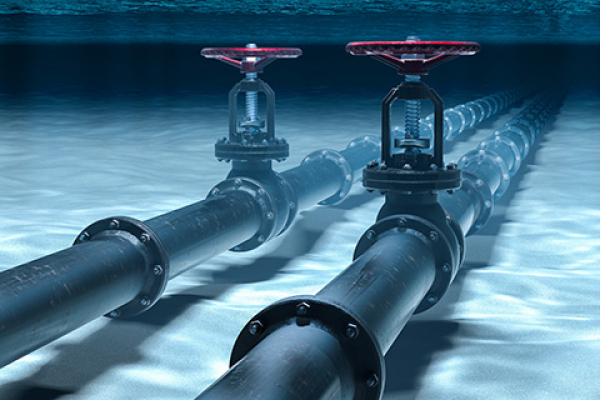
Dr. Aman Singh, a researcher at the Universidad Internacional Iberoamericana (International Iberoamerican University, UNIB), is collaborating on a study that proposes an anchor-based leak location methodology for underwater wireless sensor networks to monitor pipelines.
Currently, there is a high demand for energy resources, and the extraction industry is focused on reservoirs under the seabed. However, the marine environment presents several challenges and requires constant monitoring for disaster deterrence, coastal exploration, pollution monitoring, and oil and gas spills. Therefore, extractive industries need solutions that can automatically monitor oil leaks from deployed subsea pipelines and immediately report any damage so as not to lose resources.
Several options have been proposed, but the underwater wireless sensor network (UWSN) stands out as a potential technology that meets these challenges. For this purpose, different forms of nodes that work in synchrony with the UWSNs are used to collect data underwater and send it to a station on land for processing.
The challenge is to continuously observe the pipelines and promptly report any leaks as this cannot be done manually. Therefore, this research proposes to divide the network into multiple segments in order to efficiently locate leakages. Each segment acts as a distinct network and reports to a buoy on the surface that channels the information. Sensor nodes near the pipeline detect the leak (if any) and inform the central buoy.
The use of mobility-assisted UWSNs allows sensor nodes to monitor various emergencies, such as oil leaks, and send this information immediately to the surface. This methodology measures the distance between anchor nodes (ANs) and target nodes (TNs) using metrics based on ranges of received signal strength indicator (RSSI), angle of arrival (AoA), and time of arrival (ToA). Compared to the other proposed methods, this methodology, ALLOA, minimizes localization error by 28%, energy consumption by 7%, and localization delay by 27%.
Therefore, these data show that this methodology is a good scheme that can be used for mobility-assisted UWSNs when a special autonomous underwater vehicle (AUV) is not required. It is also applicable when automatic monitoring and pipeline leaks need to be communicated quickly.
If you want to know more about this fascinating study, click here.
For further research, check the UNIB repository.
Lastly, the Universidad Internacional Iberoamericana (International Iberoamerican University, UNIB) offers the Master in Project Design, Administration and Management with a specialty in Innovation and Product.